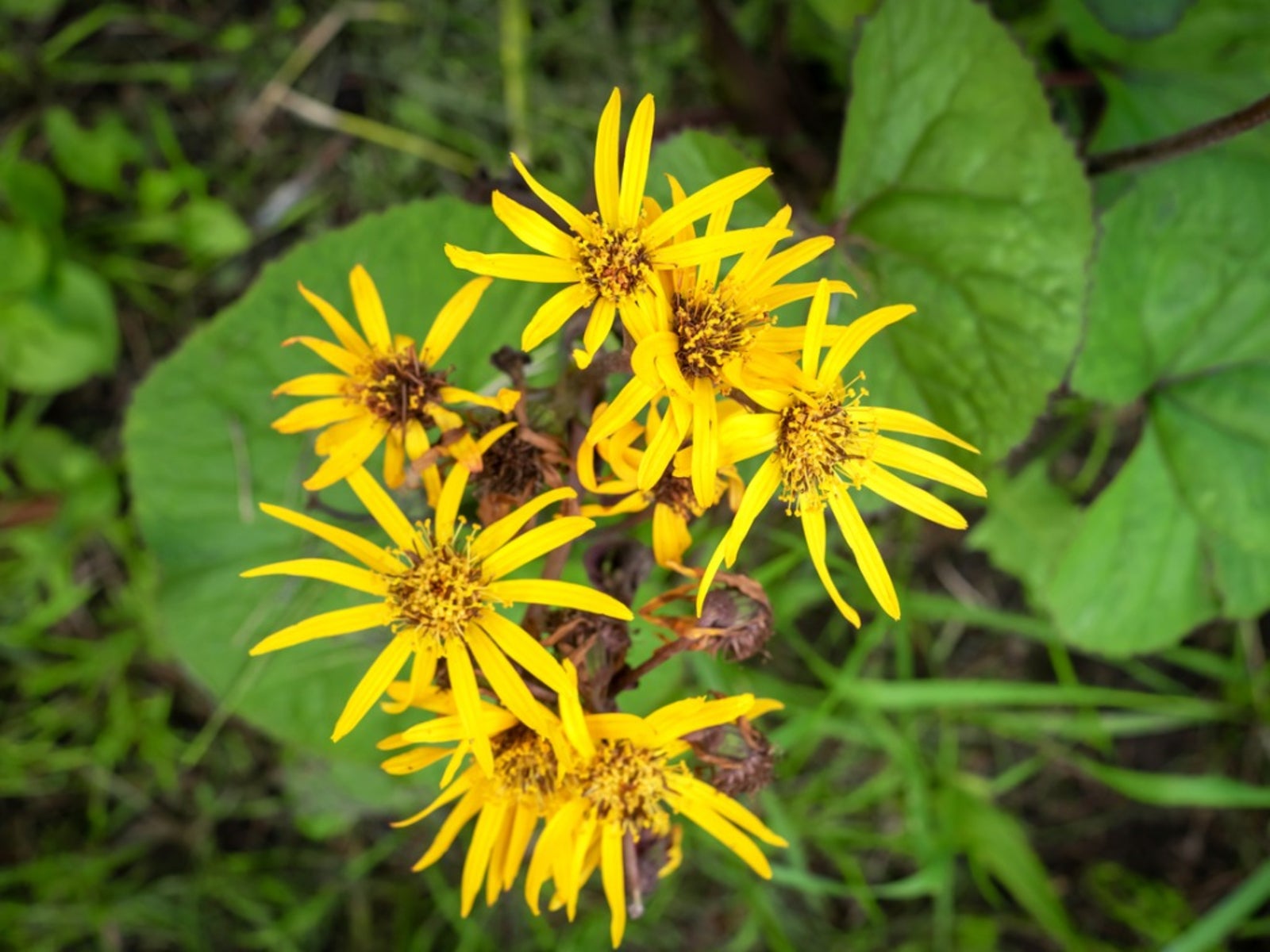Ligularia Plant Information: How To Care For Ligularia Ragwort Flower


What is Ligularia? There are 150 species in the Ligularia genus. Most of these have lovely ornamental foliage and occasionally, flowers. They thrive in areas near water in Europe and Asia. Ligularia are found in boggy and marshy soils but can survive in dryer areas with supplemental water. They are in the Aster family and are also commonly called ragwort flower. Learn how to care for Ligularia and grow a rich, lush garden of brilliant green foliage perfect for the hard to plant shade areas.
Ligularia Plant Information
The ragwort flower, or Ligularia, should not be confused with the toxic pasture weed ragwort, which is in the Senecio genus. The ragwort plants we are talking about have large toothed or notched leaves and produce spires of yellow flowers in late summer. The plants have a mounding habit, with some species carrying the foliage on long petioles. The name is derived from the Latin “ligula,” which means little tongue, and refers to the shape of the florets on the flower spire. Ligularia plant information on propagation indicates the plants may grow from seed or division.
Ligularia Planting Instructions
This genus of plants is hardy in USDA plant hardiness zones 4 to 8. They thrive in areas along rivers or ponds in partial shade. Ragwort flower is especially adaptive to a range of pH levels but requires a nutrient-rich soil with plenty of compost or leaf litter worked into it. Prior to planting, mix in a handful of bone meal and some peat moss to increase moisture retention. Ligularia planting instructions state that you must plant the crown at least ½ inch (1 cm.) below the soil level. Apply mulch around the plants to help conserve moisture. Don't worry if the foliage wilts after planting or in the summer heat. The ornamental leaves are sensitive to excess heat or disturbance. After temperatures cool down in the evening, the foliage will perk up and look fresh again.
How to Care for Ligularia
This is a carefree plant as long as site selection meets its needs. The most common problems with ragwort plants are slug and snail damage, and lack of water. The leaves can also become scorched when the bright midday sun burns them. Water the plants deeply every week or as needed in warm weather to keep soil moist. Cut off any dead or damaged leaves to the base. When the plant goes dormant in winter, place 3 inches (8 cm.) of mulch over the crown. Pull it away from the base of the plant in early spring when the ragwort flowers begin to sprout. Use Ligularia as part of a waterway display including rodgersia, lungwort, astilbe, hosta and lady's mantle as well as other moist and shade loving plants.
Sign up for the Gardening Know How newsletter today and receive a free copy of our e-book "How to Grow Delicious Tomatoes".

Bonnie Grant is a professional landscaper with a Certification in Urban Gardening. She has been gardening and writing for 15 years. A former professional chef, she has a passion for edible landscaping.